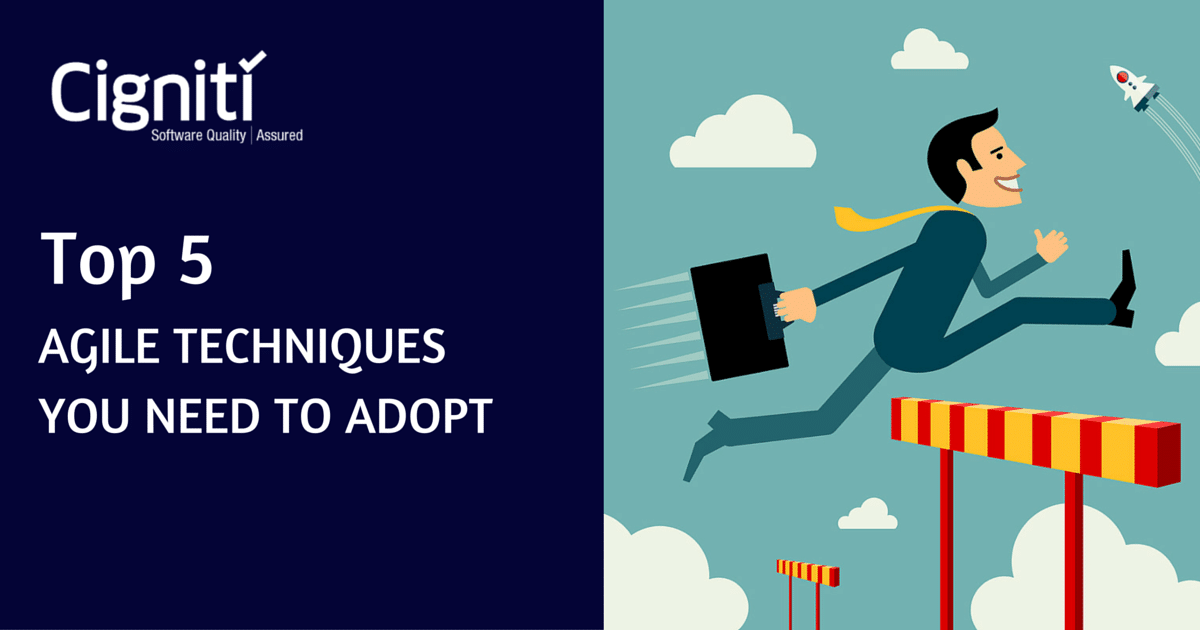How Agile transformation empowers you to thrive in a crisis
Agile transformation of an organization is an act of progressively transforming its form and structure to be able to thrive in a flexible and fast-changing environment. It goes beyond the typical adoption of Agile principles within the IT teams and extends throughout the length and breadth of a business enterprise.
Enterprise agility enables an organization to move quickly even under unprecedented circumstances, empower its people to take accountability and ownership of performance, embed customer-centricity in its core practices, and facilitate a cost and innovation-driven growth. Designed to be fast, resilient, and adaptable, Agile organizations have the ability to shift their priorities and reorganize their resources when the crisis hits to contain the damages as much as possible while creating new opportunities.
A McKinsey research has revealed that the companies that ranked higher on managing the impact of the COVID-19 crisis were also those with agile practices more deeply embedded in their enterprise operating models. That is, they were mature agile organizations that had implemented the most extensive changes to enterprise-wide processes before the pandemic.
Amidst the rapidly evolving customer preferences and market dynamics, an Agile organization has the capability to increase its speed of demand execution, quickly adapt and respond to the customer needs, reduce its costs with increased productivity, and engage and empower its employees. Let us understand what enterprise agility is and how agile transformation empowers your organization to thrive in a crisis:
What is enterprise agility or agile transformation
Agile transformation refers to the implementation or application of the Agile principles throughout an organization, across the functions beyond the IT department. An agile enterprise encompasses stable as well as dynamic elements that together form a stable and efficient backbone of the organization. When the COVID-19 pandemic hit the world and disrupted businesses, resilience became the key term for the organizations to survive. And Agile is the pathway to developing that resilience. A BCG article states that “Resilience will determine how many of today’s Fortune 100 companies are still in the ranking in 2022.”
The latest State of Agile report identified different areas within an organization that have adopted agile principles and practices with 37% adoption in Software development, 26% in IT, 12% in operations, 7% in marketing, 6% in HR, and 5% in Sales/Sales op.
Aaron De Smet, Principal at McKinsey Houston said in an interview, “Agility needs two things. One is a dynamic capability, the ability to move fast—speed, nimbleness, responsiveness. And agility requires stability, a stable foundation—a platform, if you will—of things that don’t change. It’s this stable backbone that becomes a springboard for the company, an anchor point that doesn’t change while a whole bunch of other things are changing constantly.”
An Agile transformation does not happen overnight and needs much more than a change of technology and tools. It is about bringing in a new way of thinking and gaining a fresh perspective on how an organization approaches the problems at hand, and a complete refresh of an organization’s operative model. Agile transformation may require a complete overturn of the traditional processes and practices but enterprises need to remember – for the transformation to be successful, it needs to be gradual and progressive.
Benefits of Agile transformation
As per the State of Agile report, the top benefits realized by enterprises embracing agile transformation are:
- Ability to manage changing priorities
- End-to-end visibility
- Alignment of business goals and IT
- Faster time-to-market
- Higher team productivity and morale
- Lower risk with higher predictability
- Higher quality of services and discipline
- Better management of distributed teams
- Reduction in the overall costs
“Welcome changing requirements, even late in development. Agile processes harness change for the customer’s competitive advantage.”
This is one of the key principles behind the famous Agile manifesto. With the agile transformation, enterprises get rid of the traditional, rigid ways, and open the doors to tremendous flexibility. Flexibility allows the enterprise to reprioritize at any stage without breaking if there is sudden change in the customer demands or the market environment. With shorter, iterative cycles and feedback loop, agile transformation offers the window for continuous improvement and therefore, delivery of excellent quality results to the end customers. Taking a customer-centric approach and asking the right questions at the beginning of each cycle enables the enterprises to reduce wastage, overall cost, and risks while improving productivity, efficiency, and returns.
Challenges in Agile transformation
While there are several benefits that make Agile transformation worth the effort, there are also various challenges that often result in less-than-desired outcome for the enterprises. On one hand, the ability to manage changing priorities is one of the biggest benefits of the Agile transformation, on the other hand, resistance to change is one of the top challenges that enterprises face while implementing Agile practices in their organization.
The top challenges that enterprises face while adopting and scaling Agile practices are:
- General resistance to change in the organization
- Insufficient involvement of the top management
- Inconsistent processes and practices across teams
- Non-alignment of the organizational culture with the Agile values
- Inadequate support and buy-in from the leadership
- Lack of skills and inexperience with Agile methods
- Pervasiveness of traditional methods
- Lack of collaboration and knowledge sharing
The cultural implications of agile transformation cannot and should not be underestimated or overlooked by any enterprise that is planning to go the agile way. As agile transformation essentially involves overturning of the traditional processes, the resistance from the people is expected. Therefore, before embarking on the agile transformation journey, an enterprise must align its organizational culture and the people to the agile principles, get the people onboard the transformation plan, and then only set out. The leadership should actively participate and showcase support to the employees and should design and offer necessary training activities to ensure maximum success with the transformation.
To sum up
McKinsey analyzed 25 companies across seven sectors that have undergone or are currently undergoing an agile transformation. According to their self-assessments, almost all of their agile business units responded better than their non–agile units to the shocks associated with the COVID-19 pandemic by measures of customer satisfaction, employee engagement, or operational performance. This data reinstates the criticality of agile transformation and its role in building a resilient, fast, and adaptable organization.
Cigniti has been a trusted agile testing partner for enterprises who are at various stages of adopting Agile methodologies. We have helped enterprises with QA planning, estimation, and identifying metrics into their sprints resulting in a seamless integration of their sprint teams to improve test coverage & provide quality@high-speed. Schedule a discussion with our Agile testing experts today.





Leave a Reply